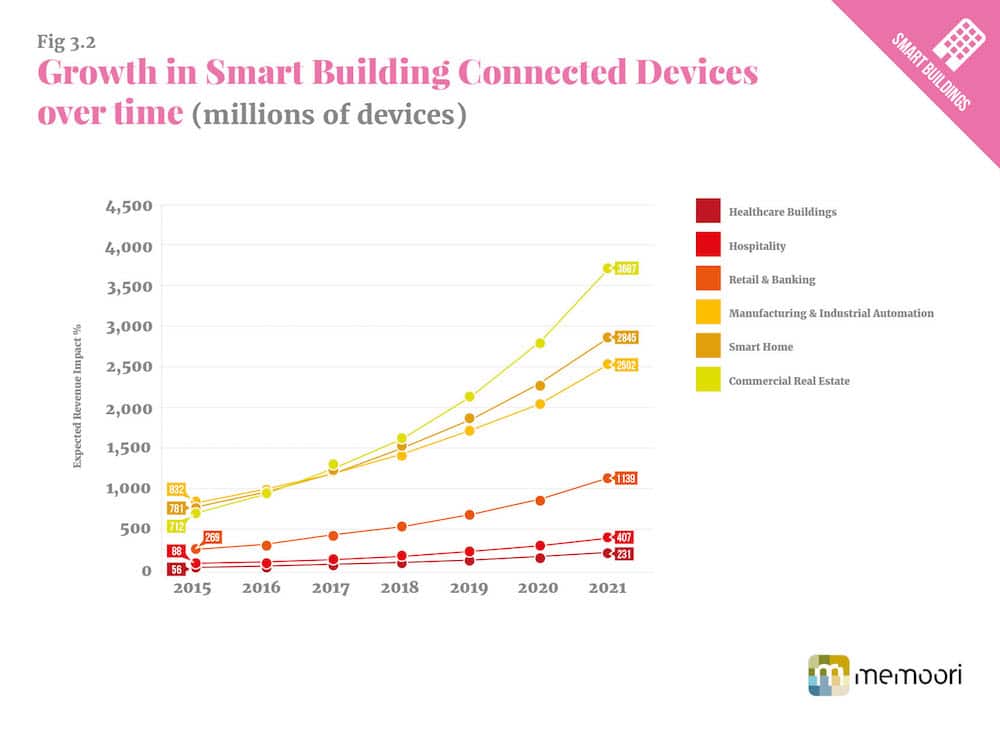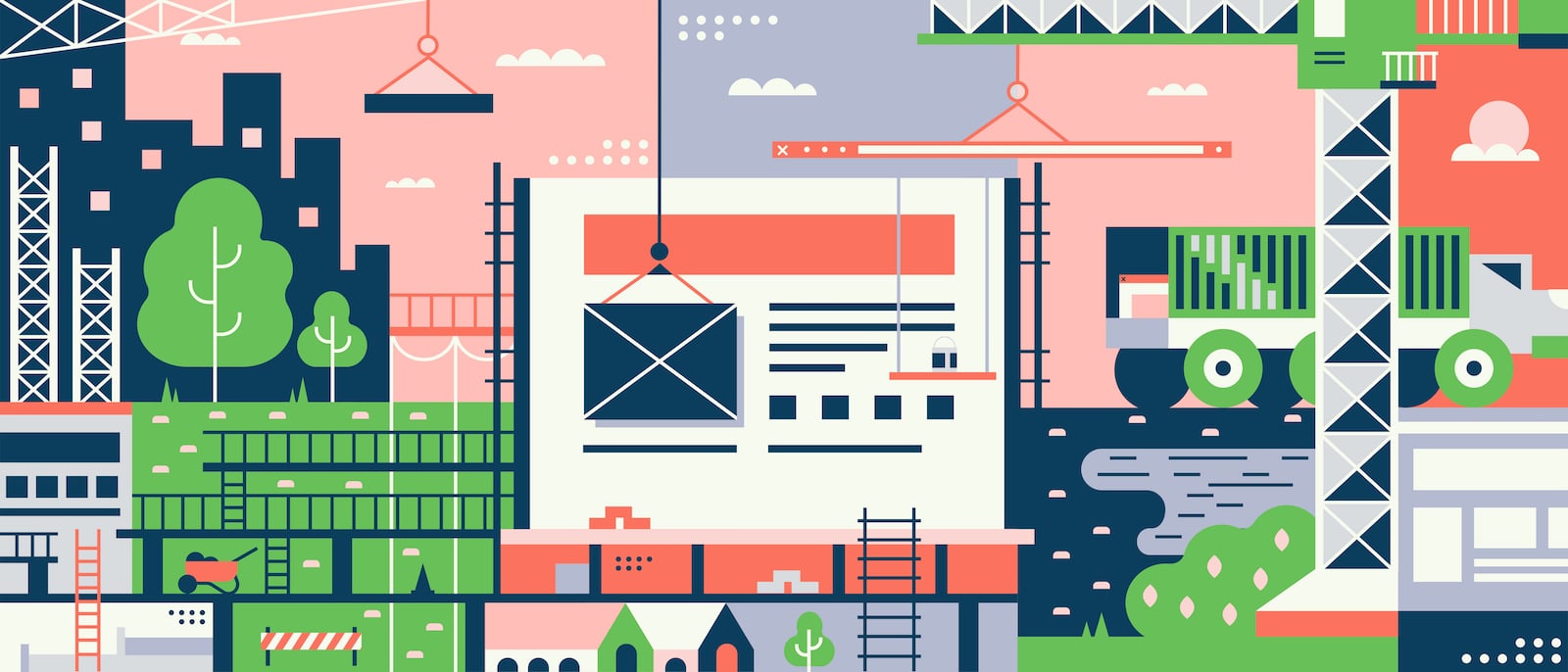Smart Building device connections are expected to grow from $2.7bn in 2015 to $11.2bn in 2021, according to our new report The Internet of Things in Smart Commercial Buildings 2016 to 2021.
This prediction demonstrates the burgeoning strength of the smart building market within the internet of things (IoT) era. In fact, connected devices in smart buildings represent approximately one third of global connected devices, which are expected to rise from $9.8bn in 2015 to $31.5bn in 2021.
The continuing progress of the IoT has been driven by a steady increase in high performance, energy efficient sensors. And as the number of units has increased the costs have dropped significantly, encouraging greater deployment of connected “things”. In fact, the cost of a sensor has dropped by more than 50% in ten years, with the average sensor now priced at $0.60 from $1.30 a decade ago.

However, it is not just the low cost of sensors that is facilitating this new era, “both processing costs and cost of bandwidth have also declined significantly, enabling more devices to be not just connected, but smart enough to know what to do with all the new data they are generating or receiving,” explains the report.
A number of organisations have attempted to track the rate at which devices are being connected to the IoT. A 2011 report from Cisco estimated that there were approximately 500 million devices connected to the Internet in 2003, by 2010, the smartphone and tablet PC market had exploded, increasing the number of connected devices to 12.5 billion.
“In just seven years, the number of connected devices per person in the world had increased by 2250%, from 0.08 to 1.8. Future projections for connected devices vary widely with estimates ranging from Cisco’s widely quoted prediction of 50.1 Billion devices by 2020, to BI Intelligence’s more conservative estimate of 20.8 Billion by the same date,” says the report.
Ultimately this trend is leading us to a world with sensors seemingly everywhere; connected physical “things” that combine with networks, software and applications to enable data exchange. “Each object on the IoT is provided with unique identifiers and the ability to transfer data about their condition, position or other attributes over the network without requiring human-to-human or human-to-computer interaction.”
Connected “things” is as broad a term as it sounds and may include anything from vehicles to wearables to elements of our built environment. In this new era our smart buildings have become a key aspect of the IoT, connecting all manner of objects and systems to optimise performance and enhance the way we live and work.
The essence of the IoT is to increase the value of information created by interconnected “things”, and turning that information into actionable intelligence. “The IoT has a wide range of applications and can be used to increase efficiency, enable new services, create new business models, or increase health and safety, or environmental benefits while at the enterprise level real-time integration of collected data streams are being leveraged to enable real-time decision making, based on analytics results,” says the report.
The broad, almost mind-blowing, scope of the IoT concept means we are yet to accurately define all the applications it might bring forth. Several organisations have even differentiated themselves with names such as Cisco’s ‘Internet of Everything’, which in some ways better describes the all-encompassing nature of an IoT model. The German government often use the term Industrie 4.0, highlighting the revolutionary impact the IoT is having on industry and commerce.

“Market expectations for what the IoT might eventually deliver have been driven in part by a blurring of the concept of what the IoT is and might mean,” the new report suggests, and given the IoT’s massive scope this is perhaps unsurprising.
In Gartner’s annual Hype Cycle of emerging technologies, the IoT reached the “peak of inflated expectations” in 2015, suggesting disillusionment may follow and market peaks may still be five to ten years away. Nevertheless, IoT pioneers are already feeling the benefits of greater interconnectivity as a world of connected devices shapes new business models and triggers a vast wave of investment.
“While a certain level of disillusionment in the IoT’s potential to deliver on the hype is inevitable, the term “IoT” is already gaining widespread acceptance for its potential to disrupt existing business models and generate new opportunities for business”.
Whatever path the IoT progresses along, it seems we can be sure that the number of connected devices will continue to increase unrelentingly. Whichever way you look at it, we are quickly moving towards an interconnected world of smart cities, populated by smart buildings, full of smart “things”.
[contact-form-7 id="3204" title="memoori-newsletter"]



